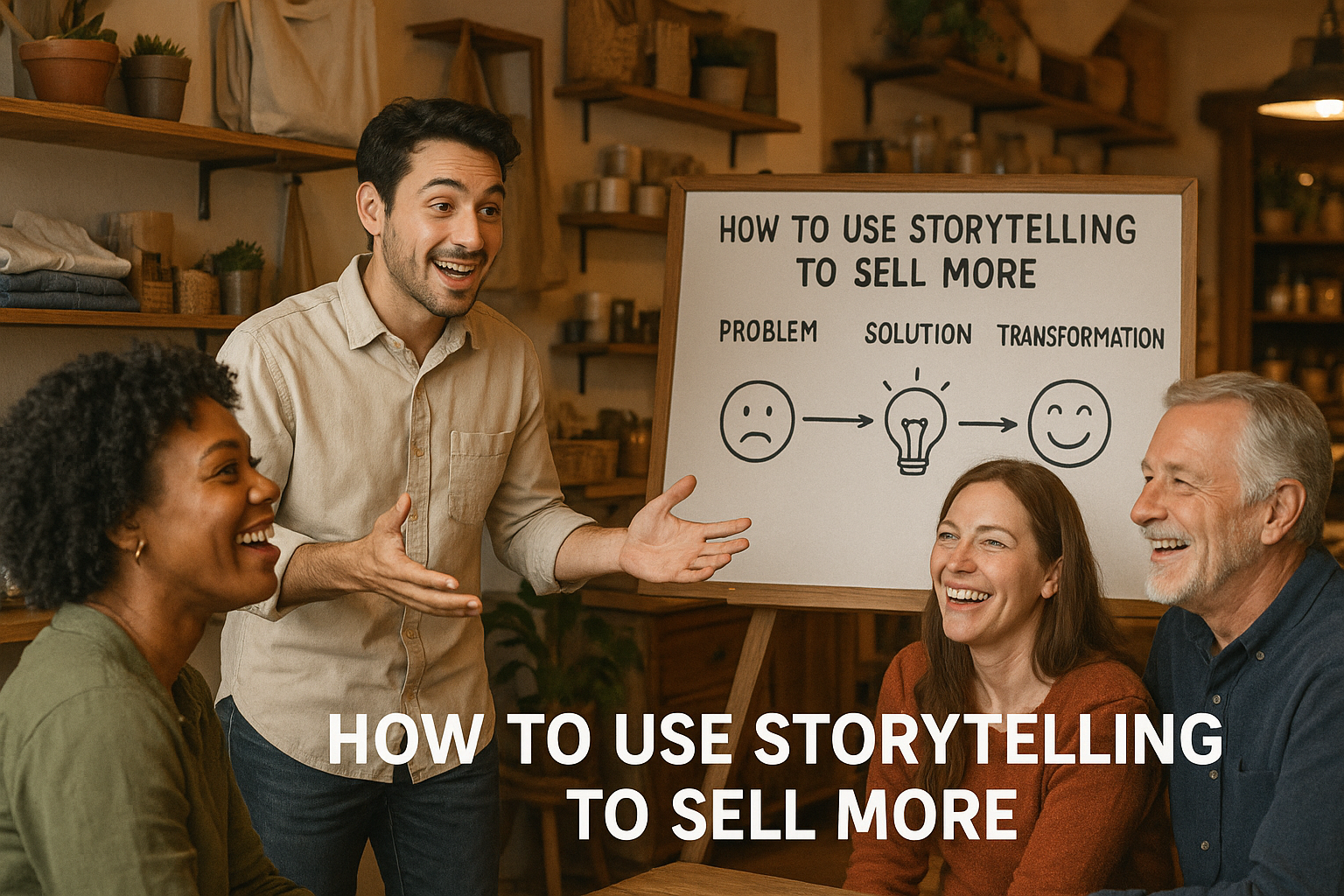Sales are not just about presenting facts, features, or prices—people connect with stories. Storytelling is one of the most powerful tools an entrepreneur can use to build emotional connections, inspire trust, and persuade customers to take action. For small entrepreneurs, mastering storytelling can make a huge difference in sales and long-term customer loyalty.
This article will explore why storytelling works, the elements of a great business story, and practical ways to use it to sell more.
Why Storytelling Works in Business
Humans are wired to remember stories more than data. Stories activate emotions, and emotions drive buying decisions.
Benefits of storytelling in sales:
- Creates emotional connection: Customers relate to your story on a personal level.
- Builds trust: Authentic stories feel more credible than sales pitches.
- Makes you memorable: People forget numbers but remember narratives.
- Simplifies your message: Complex ideas become easy to understand through stories.
When you tell a story, you invite customers to see themselves in your journey.
The Core Elements of a Powerful Story
A good sales story follows a simple structure:
- The Hero – The customer is the hero, not you.
- The Problem – Show the challenge they face.
- The Guide – Your business is the guide that helps them.
- The Solution – Explain how your product/service solves their problem.
- The Transformation – Show the happy result after using your solution.
This structure makes customers feel part of the story.
Step 1: Share Your Origin Story
Your “why” is powerful. Customers want to know the story behind your business.
Example:
- A baker who started the shop using family recipes from their grandmother.
- A freelancer who launched their business to help small businesses grow after seeing their struggles.
An authentic origin story creates trust and emotional connection.
Step 2: Tell Customer Success Stories
Testimonials and case studies work because they are stories of transformation.
How to use them:
- Share real experiences of how your product solved a problem.
- Use before-and-after examples.
- Let customers speak in their own words through reviews or short videos.
When potential buyers hear success stories, they imagine themselves achieving the same results.
Step 3: Use Storytelling in Marketing
Stories can be applied across all marketing channels:
- Social media: Share behind-the-scenes posts, customer journeys, and personal experiences.
- Email marketing: Start newsletters with short stories instead of direct promotions.
- Website: Use storytelling in your “About Us” and product descriptions.
- Ads: Create campaigns that tell a mini-story rather than just showing features.
Marketing becomes more engaging when framed as a story.
Step 4: Keep It Relatable
The best stories are simple and human. Avoid overly technical language or corporate jargon.
Tips:
- Speak in the same tone your customers use.
- Share challenges, not just successes—people relate to struggles.
- Make the customer the center of the story.
Relatable stories build stronger connections than polished but impersonal ones.
Step 5: Use Visual and Emotional Triggers
Stories are more powerful when supported by visuals and emotions.
Examples:
- Photos or videos of your process.
- Emotional words like hope, relief, confidence, joy.
- Metaphors or imagery that make your story vivid.
Visuals and emotions make your story unforgettable.
Step 6: End With a Call to Action
Every story should lead to action. After sharing your story, invite customers to take the next step.
Examples:
- “Start your journey today—order now.”
- “Join hundreds of others who transformed their lives.”
- “Let us be part of your story—contact us today.”
A good story inspires action naturally.
Final Thoughts: Stories Sell, Pitches Don’t
Storytelling transforms sales from transactional to emotional. By sharing your origin, highlighting customer success stories, keeping things relatable, and weaving narratives into your marketing, you can inspire trust and increase sales.
Remember: customers don’t just buy products—they buy the story behind them and the transformation they promise. Tell your story well, and selling becomes easier.
